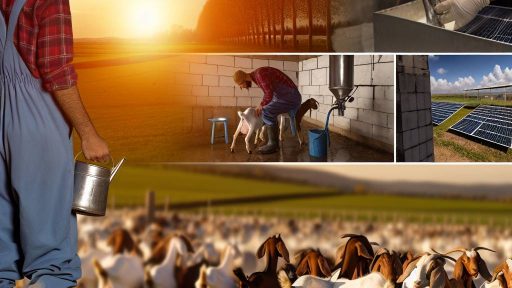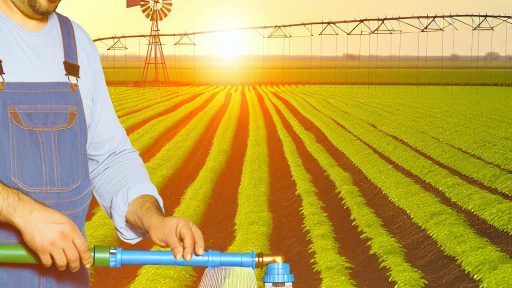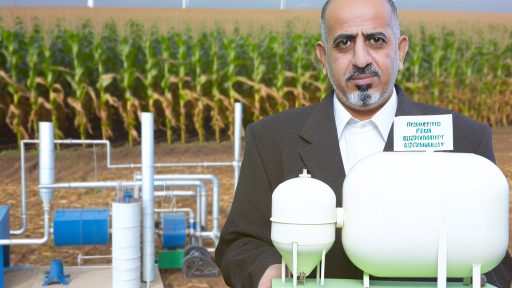Introduction to Agroforestry
Agroforestry integrates trees with crops and livestock on the same land.
This approach enhances productivity and environmental health.
It addresses various ecological challenges faced by modern agriculture.
Furthermore, agroforestry promotes sustainable land-use practices.
With diverse plants, it fosters resilience against pests and diseases.
Definition of Agroforestry
Agroforestry is the practice of combining agriculture with forestry techniques.
This integration creates a synergistic environment for diverse species.
In addition, it maximizes land use effectively over time.
By using agroforestry, farmers can improve soil quality and water retention.
Importance of Agroforestry
Agroforestry contributes significantly to biodiversity conservation.
It provides habitats for various pollinators and wildlife.
Moreover, it enhances ecosystem services, such as nutrient cycling.
Agroforestry systems can mitigate climate change impacts.
They sequester carbon while providing renewable resources.
Benefits for Pollinators
Agroforestry creates diverse landscapes that attract pollinators.
Transform Your Agribusiness
Unlock your farm's potential with expert advice tailored to your needs. Get actionable steps that drive real results.
Get StartedVarious flowering plants provide essential food resources.
These environments offer safe nesting sites for bees and butterflies.
Moreover, reduced pesticide use in these systems supports pollinator health.
Enhancing Biodiversity
An agroforestry system increases plant and animal diversity.
This diversity enhances ecosystem stability and resilience.
It promotes interactions among species, fostering a balanced ecosystem.
Additionally, it supports the recovery of native species and habitats.
Overview of Pollinators
Key Species
Pollinators play a critical role in our ecosystems and agriculture.
They enhance the growth of many fruits, vegetables, and nuts.
Bees are perhaps the most well-known pollinators.
Honeybees, for example, are vital for crop production.
Native bees, such as bumblebees, also contribute significantly.
Moreover, butterflies and moths are important as well.
They assist in the pollination of various flowering plants.
Other pollinators include birds, bats, and even some insects.
Role in Agriculture
Pollinators are essential for a healthy agricultural system.
They improve yield quantities and crop quality.
Many crops depend entirely on them for successful fruit set.
Roughly one-third of global food production relies on pollination.
This relationship sustains the farming economy and rural communities.
Without them, many crops would yield dramatically less produce.
Consequently, farmers face increased pressures on productivity.
Importance of Biodiversity
Pollinators contribute to the overall biodiversity of ecosystems.
Their role in reproduction supports various plant life.
Showcase Your Farming Business
Publish your professional farming services profile on our blog for a one-time fee of $200 and reach a dedicated audience of farmers and agribusiness owners.
Publish Your ProfileThis biodiversity in turn creates habitats for other species.
Healthy ecosystems provide food and protection for wildlife.
Additionally, diverse pollinator populations ensure resilience.
They adapt better to environmental changes and challenges.
A rich diversity of pollinators enhances ecological stability.
Biodiversity in Agroforestry: Enhancing Ecosystem Health
The Importance of Biodiversity
Biodiversity plays a crucial role in agroforestry systems.
It enhances ecosystem resilience and productivity.
Additionally, it supports vital ecological processes.
Agroforestry’s Benefits for Pollinators
Agroforestry creates diverse habitats for pollinators.
This diversity promotes pollinator health and populations.
Moreover, it encourages increased crop yields through better pollination.
For example, farmers can plant flowering trees alongside crops.
These trees attract and support bees and other pollinators.
Soil Health and Biodiversity
Biodiversity in agroforestry improves soil health.
Diverse root systems enhance soil structure and fertility.
Furthermore, nutrient cycling becomes more efficient in biodiverse settings.
Healthy soil supports diverse plant and animal species.
Strategies for Enhancing Biodiversity
Farmers can adopt various strategies to boost biodiversity.
- Planting cover crops helps maintain soil health.
- Integrating livestock can create nutrient-rich environments.
- Using native plants encourages local wildlife.
Implementing these practices promotes a balanced ecosystem.
Challenges to Biodiversity in Agroforestry
Despite its benefits, agroforestry faces challenges.
Pesticides and monocultures can reduce biodiversity.
Furthermore, climate change poses a significant threat.
Addressing these challenges is essential for sustaining biodiversity.
Community Involvement and Education
Engaging communities fosters a culture of biodiversity conservation.
Education programs can raise awareness of agroforestry benefits.
Collaborative efforts can lead to better ecosystem management.
Uncover the Details: Sustainable Livestock Management Practices for Small-Scale Farmers
How Agroforestry Structures Benefit Pollinator Habitats
Creating Diverse Ecosystems
Agroforestry integrates trees and shrubs into agricultural landscapes.
This integration enhances habitat complexity.
As a result, it creates diverse ecosystems for pollinators.
Moreover, these ecosystems support a variety of plant species.
These plants provide essential food sources for pollinators.
Improving Pollinator Foraging
Agroforestry systems often maintain flowering plants year-round.
This continuous bloom schedule supports foraging activities.
Consequently, pollinators like bees and butterflies thrive.
Additionally, diverse flowering species attract various pollinators.
This variety fosters healthy populations and genetic diversity.
Enhancing Soil Health
Agroforestry practices improve soil health through organic matter increase.
Healthy soil supports robust plant growth.
As plants grow better, they provide more nectar and pollen.
Showcase Your Farming Business
Publish your professional farming services profile on our blog for a one-time fee of $200 and reach a dedicated audience of farmers and agribusiness owners.
Publish Your ProfileConsequently, improved soil health directly benefits pollinators.
Furthermore, healthy ecosystems are more resilient to pests and diseases.
Providing Shelter and Nesting Sites
Trees and shrubs in agroforestry serve as vital nesting sites.
These habitats offer refuge from predators and harsh weather.
Pollinators, such as solitary bees, need safe nesting locations.
Agricultural landscapes with varied structure foster these environments.
This support is crucial for maintaining pollinator populations.
Promoting Pollinator Education and Conservation
Agroforestry provides opportunities for community engagement.
Farmers can educate visitors on the importance of pollinators.
Through workshops, they can promote conservation strategies.
Additionally, local communities can get involved in restoration projects.
Such initiatives can have lasting positive impacts on environments.
You Might Also Like: How Farmers Use Data Analytics for Precision Agriculture Decision Making
Case Studies: Successful Agroforestry Practices in the USA
Overview of Successful Agroforestry
Agroforestry integrates trees and shrubs into farming systems.
This practice enhances biodiversity and supports pollinators.
In the USA, many farmers have successfully adopted these methods.
Case studies highlight these successful implementations.
Pollinator-Friendly Practices in Oregon
In Oregon, farmers are adopting native hedgerows.
These hedgerows provide habitats for various pollinators.
Farmers like Sarah Jenkins report increased bee populations.
The hedgerows are also beneficial for pest management.
Integrating Livestock and Trees in Georgia
In Georgia, livestock and trees coexist on farms.
This practice helps create a balanced ecosystem.
Farmers such as Mark Thompson utilize silvopasture techniques.
This approach improves soil health and increases forage diversity.
Organic Fruit Production in California
California fruit orchards often incorporate agroforestry methods.
Farmers like Jessica Li grow cover crops alongside their trees.
These cover crops attract beneficial insects and pollinators.
This method also improves soil fertility and moisture retention.
Forest Farming in the Appalachian Region
In the Appalachian region, forest farming offers unique opportunities.
This practice includes cultivating medicinal herbs under forest canopies.
Farmers like Tom Green have successfully marketed these products.
Forest farming enhances biodiversity and preserves forested land.
Community-Based Agroforestry Initiatives
Community initiatives promote agroforestry education and practice.
Organizations like the Agroforestry Research Center support these efforts.
They offer workshops and resources for local farmers.
This community focus strengthens ecological health and social ties.
Learn More: Eco-Friendly Fertilizer Practices for Sustainable Farming Success

Challenges Facing Pollinators and Biodiversity in Conventional Agriculture
Loss of Habitat
Conventional agriculture often leads to habitat destruction.
This reduction significantly impacts pollinators and other wildlife.
Showcase Your Farming Business
Publish your professional farming services profile on our blog for a one-time fee of $200 and reach a dedicated audience of farmers and agribusiness owners.
Publish Your ProfileAs fields expand, natural habitats shrink.
This change disrupts ecosystems and food sources.
Moreover, monoculture practices further limit biodiversity.
Pesticide Use
Widespread pesticide usage poses severe threats to pollinators.
These chemicals can be toxic to beneficial insects.
For instance, neonicotinoids hinder bee reproduction and navigation.
Consequently, pollinator populations decline rapidly.
Reducing pesticide reliance is crucial for their survival.
Climate Change Impacts
Climate change alters flowering times and plant availability.
Pollinators depend on specific plants for food and habitat.
If these plants bloom early, it misaligns with pollinator activity.
Such changes threaten food security for both humans and wildlife.
Invasive Species
Invasive plant species compete with native flora.
This competition disrupts local ecosystems and food webs.
Pollinators struggle to find suitable habitats and resources.
Ultimately, this leads to further declines in their populations.
Soil Degradation
Conventional farming practices often degrade soil health.
Healthy soil supports diverse plant life, which nourishes pollinators.
Without robust soils, ecosystems become less resilient.
This decline impacts pollinator abundance and diversity.
Limited Awareness and Education
Many farmers lack information on sustainable practices.
This gap prevents them from making environmentally friendly choices.
Educational initiatives can promote better farming techniques.
Such training helps integrate biodiversity into agricultural systems.
Explore Further: Community-Supported Agriculture and Organic Farming: A Perfect Match
Strategies to Implement Agroforestry for Biodiversity Enhancement
Diverse Planting Techniques
Employing diverse planting techniques enriches agroforestry systems.
This approach enhances habitat availability for various species.
Incorporate both native and non-native species where appropriate.
Diversity attracts different pollinators and beneficial insects.
As a result, the ecosystem becomes more resilient and productive.
Creating Pollinator Pathways
Establishing pollinator pathways facilitates the movement of pollinators.
These pathways provide necessary resources like food and shelter.
Use wildflowers and native plants to design effective pathways.
Such features connect fragmented habitats in agricultural landscapes.
Consequently, you promote greater pollinator health and diversity.
Integrating Livestock and Agroforestry
Integrating livestock into agroforestry systems adds numerous benefits.
Livestock can naturally fertilize and control pests in these systems.
Moreover, their grazing patterns promote plant growth diversity.
In turn, this enhances habitat complexity for numerous species.
Implement rotational grazing to optimize land and resources.
Showcase Your Farming Business
Publish your professional farming services profile on our blog for a one-time fee of $200 and reach a dedicated audience of farmers and agribusiness owners.
Publish Your ProfileUtilizing Organic Practices
Adopting organic farming practices supports ecological health.
These methods minimize chemical use, protecting pollinators and biodiversity.
Encourage cover cropping and crop rotation to maintain soil vitality.
Such practices enhance soil health, promoting diverse plant life.
Ultimately, healthier soils lead to robust agroforestry systems.
Establishing Biodiversity Buffers
Plant biodiversity buffers around fields to mitigate environmental impacts.
These buffers reduce erosion and improve water quality in nearby ecosystems.
Incorporate a mix of trees, shrubs, and herbaceous plants in buffers.
This variety supports a greater range of wildlife and pollinator species.
Buffers serve as vital habitats and migration corridors for animals.
Collaborating with Local Communities
Engaging with local communities strengthens agroforestry initiatives.
Community involvement fosters a shared vision for biodiversity enhancement.
Workshops can educate farmers about the benefits of agroforestry.
Collaboration can lead to a network of conservation efforts locally.
Such partnerships bolster support for sustainable practices over time.
Future Perspectives: Agroforestry’s Role in Sustainable Agriculture and Conservation
Integration of Agroforestry Practices
Agroforestry integrates trees and shrubs into agricultural landscapes.
This approach enhances farm productivity and promotes ecological health.
Moreover, it fosters a diverse habitat for wildlife and beneficial insects.
Benefits to Pollinators and Biodiversity
Agroforestry provides essential resources for pollinators.
Flowering plants serve as food sources for bees and butterflies.
In addition, these systems create nesting sites for various species.
As a result, agroforestry contributes to a resilient ecosystem.
Carbon Sequestration and Climate Resilience
Agroforestry practices enhance carbon sequestration in soils and biomass.
This contributes to mitigating climate change effects on agriculture.
Furthermore, these systems improve landscape resilience against extreme weather events.
Economic Viability and Farmer Support
Agroforestry can increase farmers’ income through diversified products.
These may include fruits, nuts, timber, and medicinal plants.
Additionally, agroforestry systems often require less chemical input.
This leads to lower costs and a healthier environment.
Community Engagement and Education
Successful agroforestry initiatives involve local communities.
Education programs can promote sustainable practices and biodiversity awareness.
Collaboration with farmers enhances the adoption of agroforestry systems.
Policy Support for Agroforestry Implementation
Government policies play a vital role in supporting agroforestry initiatives.
Incentives can encourage farmers to incorporate sustainable practices.
Additionally, funding research and education benefits the entire agricultural sector.
Ultimately, coordinated efforts can lead to a more sustainable future for U.S. agriculture.
Additional Resources
Cultivating a Better Future: How Your Support Fuels Sustainable …




